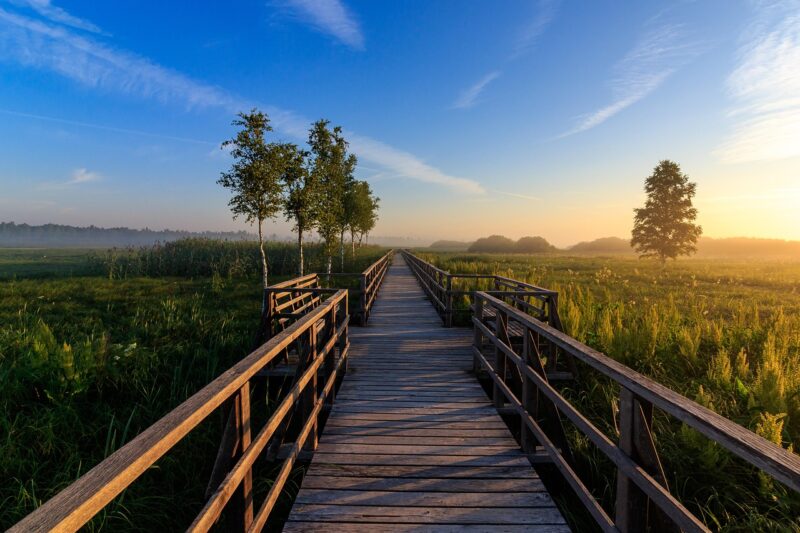Why Wetlands Are Essential for Ecosystems and the Role of Water in Their Formation
November 14, 2024

Wetlands are one of the most biologically diverse ecosystems on the planet, playing an essential role in the health of our environment. They support a myriad of plant and animal species, store carbon, purify water, and protect shorelines from erosion. Understanding the functions of wetlands and the role of water in their formation is crucial for conservation efforts and sustainable environmental practices.
1. What Are Wetlands?
Wetlands are areas where water is either present at or near the surface for part of the year. They can be freshwater, saltwater, or brackish and include marshes, swamps, and bogs. Wetlands are characterized by hydric soils—soils that are saturated with water long enough to support aquatic plants. This unique combination of water, soil, and vegetation creates a distinct ecosystem that is critical for biodiversity.
Wetlands are defined by two primary attributes:
- Hydrology: Wetlands are influenced by water levels that can fluctuate seasonally, affecting the types of plants and animals that can thrive there.
- Soils: The presence of water-saturated soils alters their chemical composition, supporting specific wetland vegetation adapted to these conditions.
These characteristics create unique habitats that serve multiple ecological purposes.
2. Importance of Wetlands in Ecosystems
Wetlands are vital for various environmental functions:
a. Biodiversity Hotspots
Wetlands are among the most productive ecosystems, supporting an array of wildlife, including birds, fish, amphibians, and invertebrates. They provide nesting grounds, feeding areas, and migration stopovers, making them critical for biodiversity protection. Approximately 40% of the world’s species depend on wetlands at some stage in their life cycle.
b. Water Filtration
Wetlands act as natural water filters by trapping sediments, removing pollutants, and breaking down harmful substances through microbial processes. This filtering capacity helps improve water quality in adjacent rivers and lakes, benefiting not only the environment but also human populations that rely on clean water sources.
c. Flood Control
Wetlands play a crucial role in absorbing excess rainwater and regulating water flow. They serve as natural sponges, reducing flood risks for nearby communities by slowing down water runoff and allowing it to infiltrate into the ground. This function becomes especially important in the face of climate change and increasing frequency of extreme weather events.
d. Carbon Sequestration
Wetlands are significant carbon sinks. Through the photosynthesis of wetland plants and the accumulation of organic matter in waterlogged soils, these ecosystems store vast amounts of carbon dioxide, helping mitigate climate change. Their preservation is essential for global carbon management strategies.
3. The Role of Water in Wetland Formation
Water is the driving force behind the formation and continued existence of wetlands. Its presence dictates the types of vegetation that can thrive, the soil composition, and the overall ecosystem characteristics. Here are some key points about the role of water in wetlands:
a. Hydrology and Water Sources
Wetlands are formed from a variety of hydrological conditions, including:
- Surface Water: This includes rivers, lakes, and ponds that may overflow into wetland areas, providing consistent moisture.
- Groundwater: In some regions, wetlands are fed by underground aquifers that surface in specific locations, resulting in wetlands that may remain wet even during dry spells.
- Precipitation: Rainfall can temporarily create conditions suitable for wetland formation, particularly in areas that experience periodic flooding or consistent rainfall patterns.
Understanding these water sources helps in preserving and restoring wetlands, particularly in areas facing hydrological disturbances due to human activity or climate change.
b. Water Level Fluctuations
Wetlands often experience natural variations in water levels over time, influenced by seasonal changes, storms, and other environmental factors. These fluctuations create different habitats within the same wetland, allowing various plant and animal species to thrive.
Some plants are adapted to survive in saturated conditions, while others may require drier phases. The biodiversity upheld by these changing conditions is vital for ecosystem resilience.
4. Threats to Wetlands and Conservation Efforts
Despite their importance, wetlands face numerous threats from human activities and climate change.
a. Human Activities
Urban development, agriculture, pollution, and resource extraction can degrade and destroy wetlands. Land reclamation efforts often involve draining wetlands to expand usable land, which disrupts the delicate ecosystems and leads to habitat loss.
b. Climate Change
Changes in precipitation patterns and rising sea levels significantly impact wetland ecosystems. Increased flooding may lead to the loss of plant species, while drought conditions can reduce water availability, stressing the ecosystem.
c. Conservation Measures
To combat these threats, conservation efforts focus on protecting existing wetland areas, restoring degraded sites, and implementing sustainable management practices. Measures include:
- Legal Protection: Many countries have laws and international treaties protecting wetlands from development and degradation.
- Restoration Projects: Initiatives to restore wetlands involve re-establishing water levels and planting native vegetation to revive ecological functions.
- Education and Awareness: Public education can foster a greater appreciation for wetland ecosystems and encourage community involvement in conservation efforts.
Conclusion
Wetlands are indispensable for maintaining ecological balance, supporting biodiversity, and providing essential ecosystem services. The role of water in their formation and sustainability cannot be overstated. As climate change poses increasing threats to these vital ecosystems, it is imperative that we prioritize their protection and restoration. By understanding the importance of wetlands, we can better advocate for their conservation and ensure that future generations can enjoy their benefits.
By recognizing wetlands as important ecological assets, we have a responsibility to protect these rich ecosystems for their inherent value and the services they provide to humanity. Together, through sustainable practices and increased awareness, we can foster a future where wetlands continue to thrive.






